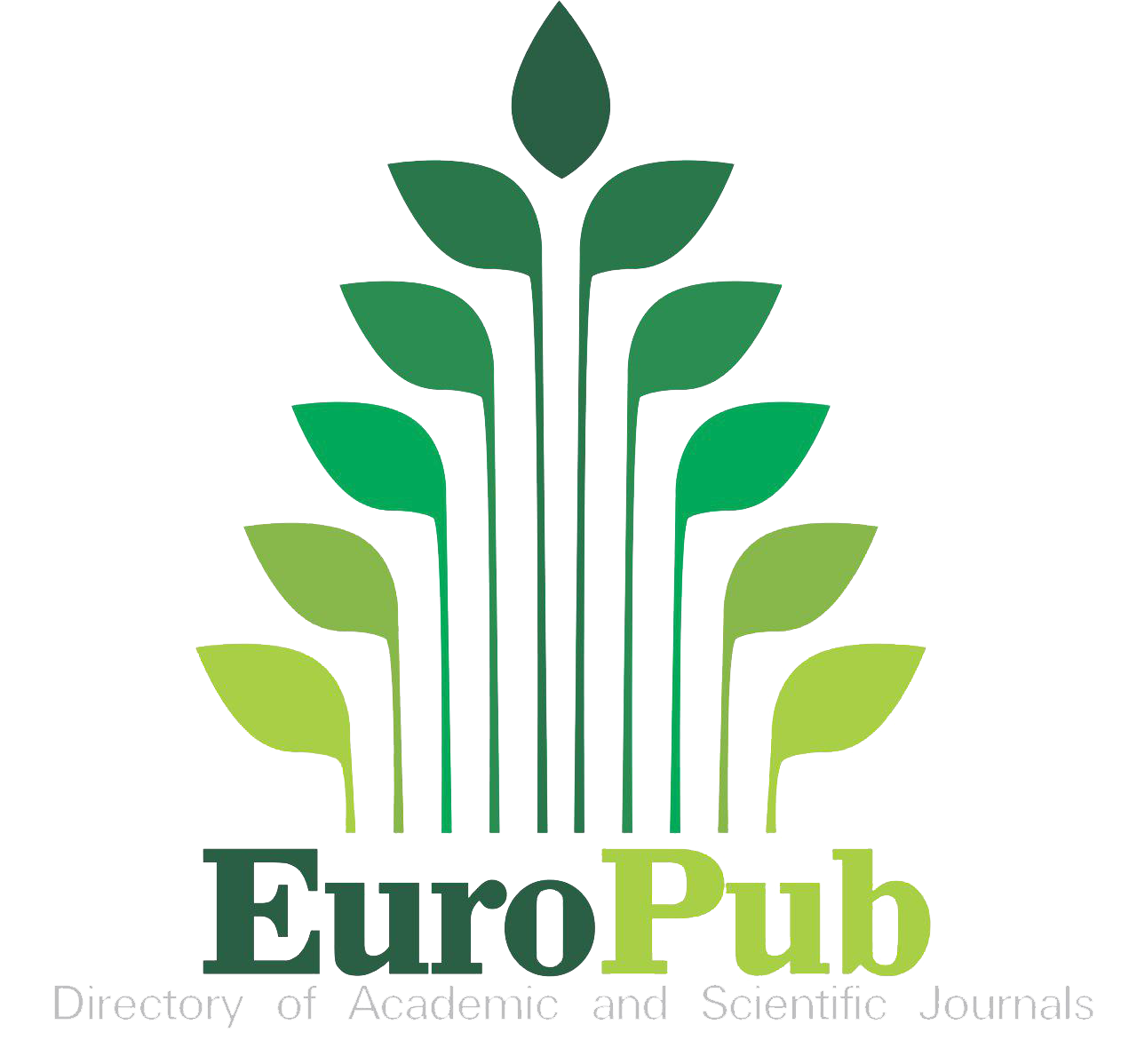Triple Fortification Improved the Physicochemical Qualities of Soy-Chocolate Drinks
DOI:
https://doi.org/10.54536/ajfst.v4i1.4080Keywords:
Cocoa Powder, Fortification, Nutrients, SoymilkAbstract
The effect of triple fortification on the physicochemical qualities of soy-chocolate drinks were evaluated. Triple fortification of soy-chocolate drinks with 0.15 mg potassium iodide, 2.0 mg ferrous sulphate, and 1.6 mg pro-vitamin A (retinol palmitate) / 100g sample was used as recommended by the World Health Organization (WHO) fortification guidelines. Four soy-chocolate drinks comprising of non-fortified plain (NFPSCD), fortified plain (FPSCD), non-fortified sweetened (NFSSCD) and fortified sweetened (FSSCD) were formulated. Soy-chocolate drinks were formulated and analyzed using standard procedures. pH ranged from 6.12 to 6.86, TTA varied from 0.62 to 0.89 % lactic acid, and specific gravity from 1.02 to 1.07. The vitamin content increased significantly (p< 0.05)., retinol palmitate varied from 0.14 to 1.66 mg/ 100g, while vitamin B1 ranged from 0.20 to 0.35 mg/ 100g, vitamin B2 from 0.50 to 0.72 mg/ 100g, vitamin B3 1.03 to 1.22 mg/ 100g, vitamin B6 from 0.21 to 0.23 mg/ 100g, vitamin K range between 2.18 to 3.37 mg/ 100g, Vitamin E from 0.81 to 0.96 mg/ 100g. Mineral composition of soy-chocolate drinks were calcium which was 92.43 to 94.36 mg/ 100g, sodium 80.06 to 83.26 mg/100g, potassium 306.43 to 329.52 mg/100g, magnesium 46.04 to 47.12 mg/ 100g, phosphorus 120.62 to 123.54mg/100g, zinc 2.01 to 2.69, iron 3.71 to 3.88 mg/ 100g, iodine 0.18 to 0.24 mg/100g. It was observed from this research that soy-chocolate nutrient quality was improved because of fortification.
Downloads
References
Achinewhu, S. C. (2019). Nuts and seeds. In Nutrition quality of plant foods (pp. 134–159). Post Harvest Research Unit, Department of Biochemistry, University of Benin.
Adams, M. R., & Moss, M. O. (1995). Food microbiology. The Royal Society of Chemistry.
Adebowale, A. A., & Sanni, L. O. (2019). Effects of solid content and temperature on the viscosity of tapioca meal. Journal of Food Science and Technology, 50(3), 573–578. https://doi.org/10.1007/s13197-011-0363-7
Association of Official Analytical Chemists (AOAC). (2017). Official methods of analysis (8th ed.). AOAC.
AOAC International. (2005). Official methods of analysis (18th ed.). AOAC International.
Ariahu, C. C., Ukpabi, U., & Mbajunwa, K. O. (199a). Production of African breadfruit (Treculia africana) and soybean (Glycine max) seed-based food formulations: 1. Effects of germination and fermentation on nutritional and organoleptic quality. Plant Foods for Human Nutrition, 54(2), 123–266.
Ashaver, A., Ariahu, C., Yusuf, I., Ariahu, C. E., & Gbuusu, B. (2023). Storage changes in triple-fortified tigernut and moringa seed-based aqueous drinks. Asian Journal of Food Research and Nutrition, 2(4), 821–833.
Ball, G. F. M. (1994). Water soluble vitamins: Assays in human nutrition. Chapman and Hall.
Blackman, C. J., Sean, M. G., Chang, Y., Mc, A., & Westoby, M. (2010). Leaf hydraulic vulnerability to drought is linked to site water availability across a broad range of species and climates. Annals of Botany, 114(3), 435–440. https://doi.org/10.1093/aob/mcq128
Codex Alimentarius. (n.d.). General principles of the addition of essential nutrients to food (Vol. 4). Joint FAO/WHO Food Standards Programme.
Doğan, M., & Kayacier, A. (2019). Rheological properties of reconstituted hot salep beverage. International Journal of Food Properties, 7(4), 683–691.
FAO/WHO/UNU. (2002). Human vitamin and mineral requirements: Report of a joint food and agriculture organization, World Health Organization and United Nations University. Food and Nutrition Bulletin, 19(2), November 2020. United Nations University Press.
Federal Government of Nigeria. (2021). Food fortification regulations (108, 135), 3091–3108. Printed and published by Federal Government Printer, Lagos, Nigeria.
Food and Agriculture Organization/World Health Organization. (1995). Codex alimentarius. FAO/WHO.
Grover, Z., & Ee, L. C. (2009). Protein-energy malnutrition. Pediatric Clinics of North America, 56, 1055–1068. https://doi.org/10.1016/j.pcl.2009.07.00
Ijarotimi, O. S., & Ashipa, F. (2019). Evaluation of nutritional composition, sensory, and physical properties of home-processed weaning food based on low-cost locally available food materials. Nutrition & Food Science, 36(1), 6–17.
Iwe, M. O. (2003). The science and technology of soybeans (20th ed.). Communication Service Ltd.
Illinois, E. (2019). Production and nutritional benefits of ultra-high blends of soymilk. International Journal of Food Science, 5, 873–879.
Indrawati, R., & Otgonbayar, U. (2017). Stability of vitamin K in food systems. Journal of Food Science, 8(5), S1448–S1456.
Ishiwu, C. N., & Onyeji, A. C. (2019). Properties of an instant gruel based on maize starch, African yam bean, and soybean flours. Nigerian Journal of Nutritional Sciences, 25, 16–19.
Ismail, Y. S., Rustom, M. M., Lopez-Leiva, I., & Baboo, M. N. (2020). UHT-sterilized peanut beverages: Kinetics of physicochemical changes during storage and shelf-life prediction modeling. Journal of Food Science, 61(1), 123–134.
Muhimbula, H. S., Issa-Zacharia, A., & Kinabo, J. (2011). Composition and sensory evaluation of complementary foods from local, cheap, and readily available cereals and legumes in Iringa, Tanzania. African Journal of Food Science, 5, 26–31.
National Institutes of Health, Office of Dietary Supplements. (2022). Vitamin E: Fact sheet for health professionals.
Ochanda, S. O., Onyango, C. A., Mwasaru, A. M., Ochieg, J. K., & Mathoko, F. M. (2020). Effects of malting and germination treatments on group B-vitamins of red sorghum, white sorghum, and pearl millet in Kenya. Journal of Applied Biosciences, 34, 2128–2134.
Omary, Z., Lupiana, D., Mtenzi, F., & Wu, B. (2019). Challenges to e-healthcare adoption in developing countries: A case study of Tanzania. In Proceedings of the First International Conference on Networked Digital Technologies. Ostrava.
Terhemba, N. S., Ariahu, C. C., Terhemba, U. I., & Nember, U. I. (2024). Finger millet and defatted sesame seed flours as complementary foods: Nutritional evaluation and protein quality.
UNICEF. (2021). Use of multiple micronutrient powders for point-of-use fortification of foods consumed by infants and young children aged 6–23 months and children aged 2–12 years. World Health Organization.
World Health Organization. (2021). Malnutrition: Factsheet. https://www.who.int/news-room/fact-sheets/detail/malnutrition
Yakum, N. K., Ariahu, C. C., Ariahu, E. C., & Igoli, J. O. (2024). Physicochemical properties of fortified coconut milk-based chocolate-like drinks as influenced by cocoa powder and sugar levels. Journal Name, 3(1), page range.
Yakum, N. K., Amove, J., Abuengmoh, P., Vachefon, H. F., & Konsum, L. K. (2022). Physicochemical and sensory properties of yoghurt from cow milk, soybean milk, and tiger nut milk blends spiced with ginger powder. International Journal of Food Science and Nutrition, 7(3), 42–51.
Yasmine, M. (2019). Impact of small-scale fermentation technology on food safety in developing countries. Journal Name, 75, 213–229.
Zilic, S., Arda, S., Halise, G. A., & Vural, G. (2017). Phenolic compounds, carotenoids, anthocyanins, and antioxidant capacity of colored maize. Journal of Agricultural and Food Chemistry, 60(5), 1224–1231.
Downloads
Published
How to Cite
Issue
Section
License
Copyright (c) 2025 Terhemba Nancy Seember, Ariahu Charles Chukwuma, Kelly Ndombow Yakum, Peter Abuengmoh, Nwatum Irene Ayah

This work is licensed under a Creative Commons Attribution 4.0 International License.







